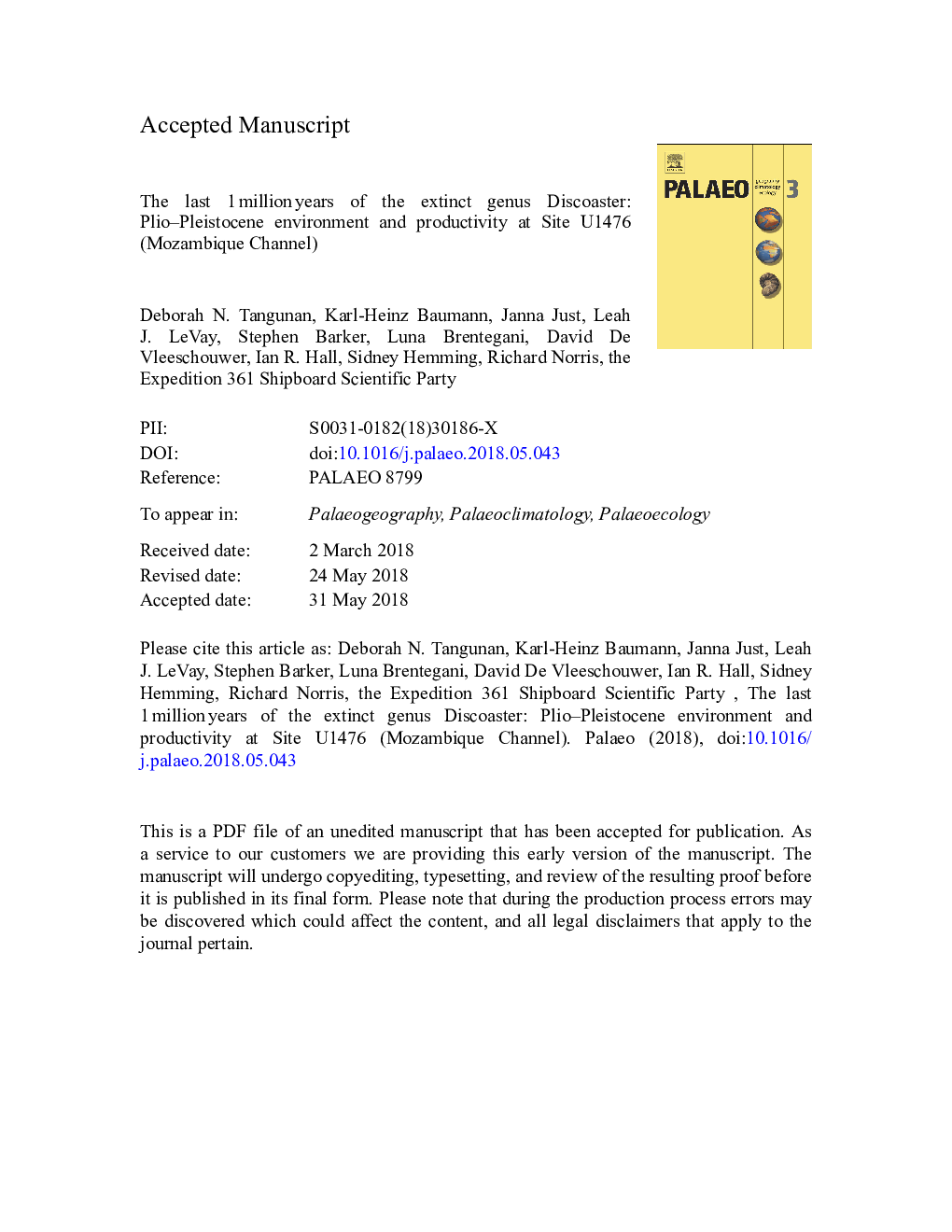| کد مقاله | کد نشریه | سال انتشار | مقاله انگلیسی | نسخه تمام متن |
|---|---|---|---|---|
| 8868142 | 1622087 | 2018 | 29 صفحه PDF | دانلود رایگان |
عنوان انگلیسی مقاله ISI
The last 1â¯millionâ¯years of the extinct genus Discoaster: Plio-Pleistocene environment and productivity at Site U1476 (Mozambique Channel)
دانلود مقاله + سفارش ترجمه
دانلود مقاله ISI انگلیسی
رایگان برای ایرانیان
کلمات کلیدی
موضوعات مرتبط
مهندسی و علوم پایه
علوم زمین و سیارات
فرآیندهای سطح زمین
پیش نمایش صفحه اول مقاله

چکیده انگلیسی
A detailed paleoenvironment reconstruction from the Mozambique Channel, western Indian Ocean, based on the calcareous nannoplankton assemblages was conducted for the interval between 2.85 and 1.85â¯Myr. This study covers the period during which the successive extinction of the last five species of discoasters occurred. New productivity data obtained from the abundances of the Discoaster species (Discoaster brouweri, D. triradiatus, D. pentaradiatus, D. surculus, and D. tamalis) and other indicative calcareous nannoplankton taxa showed abundance variations, which were at paced with the 100, 41, and 23â¯kyr astronomical periodicities. A shift in the productivity and water-column stratification proxies occurred at ~2.4â¯Ma, after the onset of the Northern Hemisphere glaciation. Here we propose that the variability recorded at International Ocean Discovery Program Site U1476 reflects the interplay between forcing associated with warm tropical Pacific and cold southern ocean influences. The former is shown by consistent occurrence of warm water taxa (Calcidiscus leptoporus, Oolithotus spp., Rhabdosphaera clavigera, Syracosphaera spp., Umbellosphaera spp.), typical of Indonesian Throughflow surface waters. On the other hand, the occurrence of Coccolithus pelagicus indicates the influence of cold, nutrient-rich sub-Antarctic surface waters. A more mixed water column initiated at ~2.4â¯Ma, and a consequent productivity increase led to the gradual reduction of the Discoaster species, until their extinction at 1.91â¯Ma. This period was characterized by the low values of the Florisphaera profunda index and high abundances of upper photic zone flora, indicative of nutrient-rich surface water conditions. High productivity at the location during this period could have also been amplified by localized upwelling events driven by the Mozambique Channel eddies.
ناشر
Database: Elsevier - ScienceDirect (ساینس دایرکت)
Journal: Palaeogeography, Palaeoclimatology, Palaeoecology - Volume 505, 15 September 2018, Pages 187-197
Journal: Palaeogeography, Palaeoclimatology, Palaeoecology - Volume 505, 15 September 2018, Pages 187-197
نویسندگان
Deborah N. Tangunan, Karl-Heinz Baumann, Janna Just, Leah J. LeVay, Stephen Barker, Luna Brentegani, David De Vleeschouwer, Ian R. Hall, Sidney Hemming, Richard Norris,